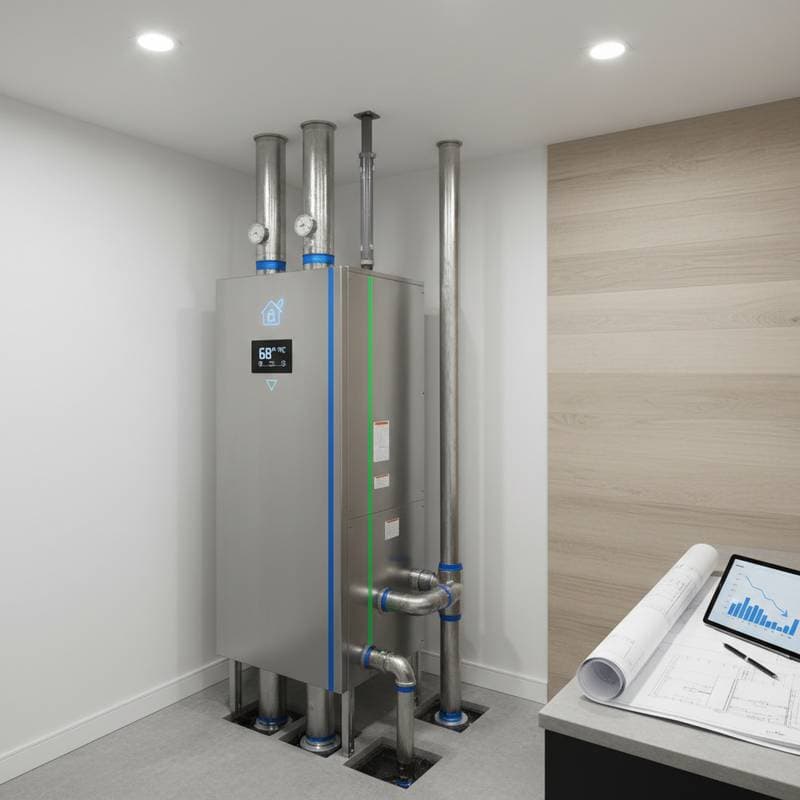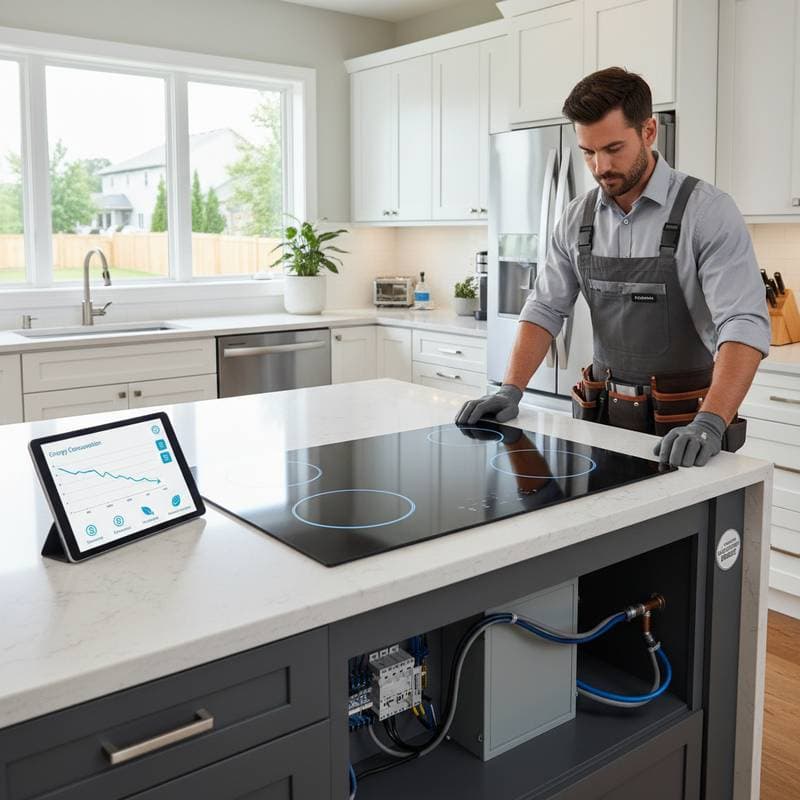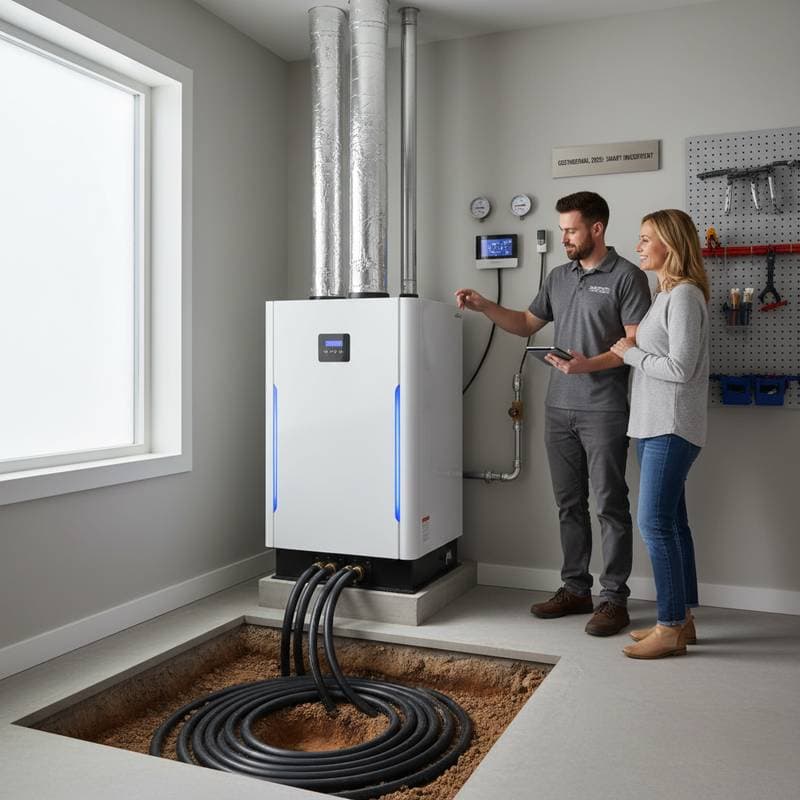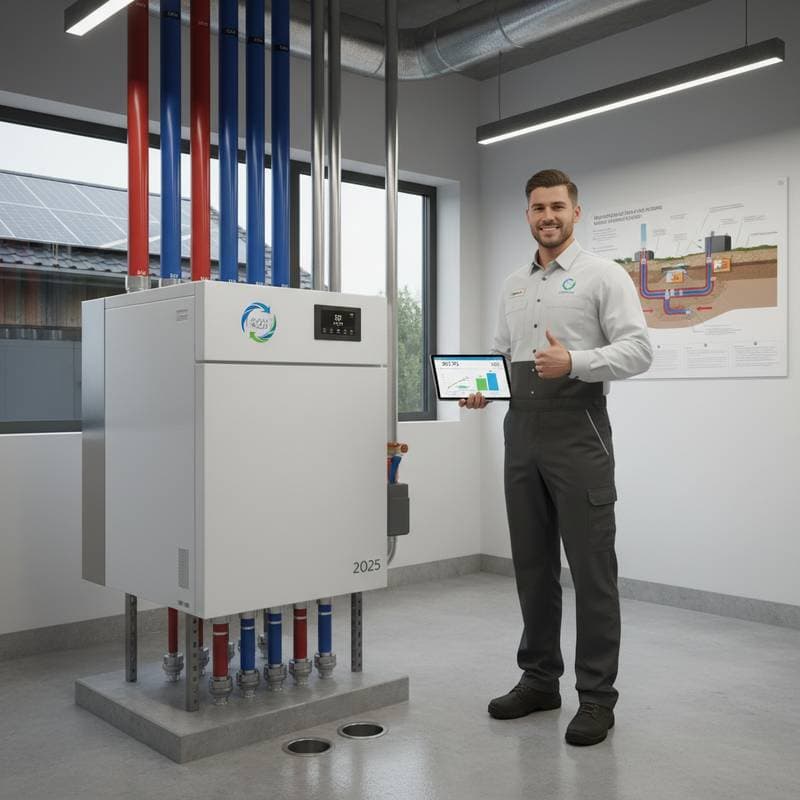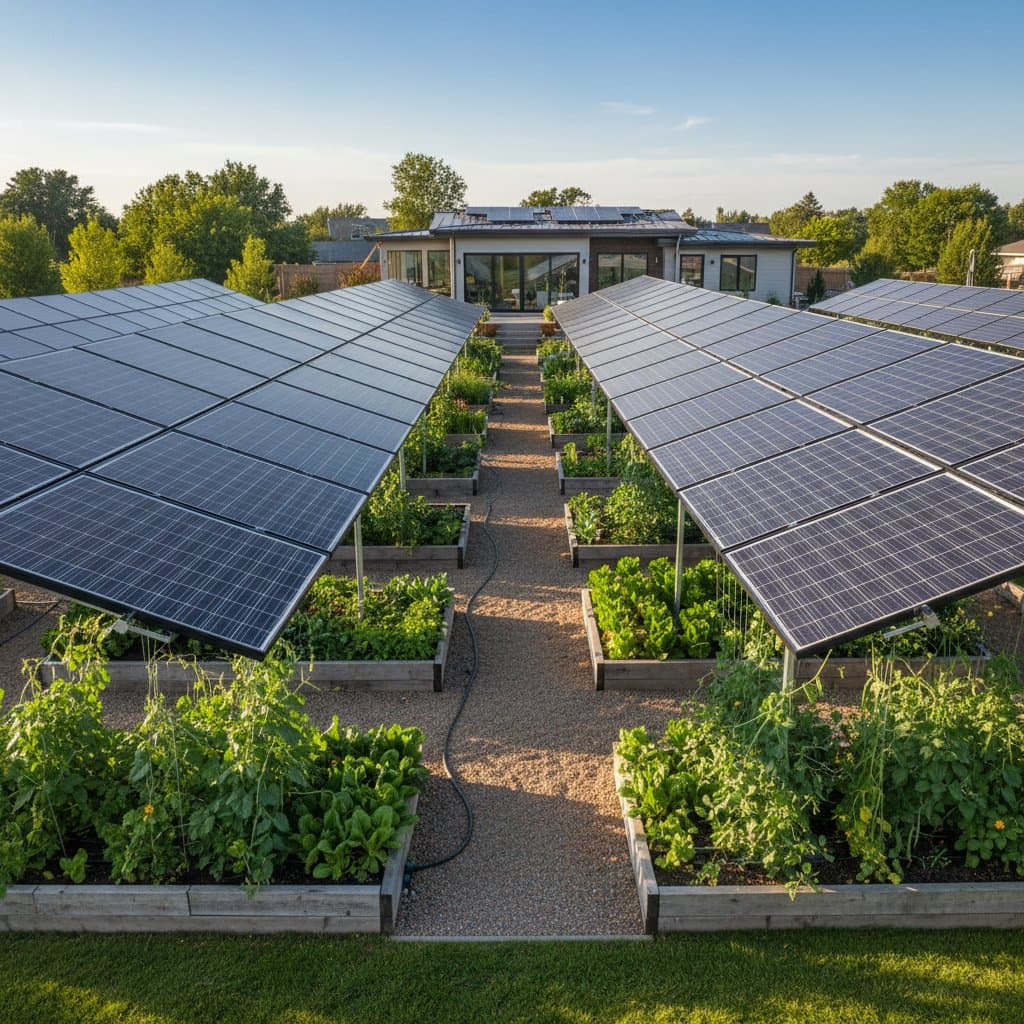Key Points
- Geothermal cooling harnesses stable underground temperatures for efficient, even comfort with minimal energy use.
- Rising energy expenses and environmental concerns prompt homeowners to abandon traditional air conditioners.
- These systems typically reduce cooling costs by 40 to 70 percent relative to standard HVAC setups.
- Although initial installation expenses are elevated, returns on investment occur within five to ten years, influenced by system scale and local energy prices.
- Optimal performance and durability depend on precise design, soil properties, and expert installation.
The Quiet Revolution Underground
Picture a summer day where your home maintains ideal coolness without the drone of an outdoor compressor or bursts of warm exhaust. Comfort persists steadily, air quality improves, and utility bills avoid sharp increases during heat waves. This scenario becomes standard for homeowners adopting geothermal cooling over conventional air conditioning.
This transition stems from practical economics, environmental responsibility, and proven technology. Individuals recognize that a reliable cooling resource exists directly beneath the surface, ready to serve.
Challenges with Conventional Air Conditioning
Typical air conditioners depend on electricity to shift heat from indoors to the outdoor environment. Higher outdoor temperatures force the units to labor more intensely, which raises energy demands and accelerates wear. Homeowners encounter mounting repair bills, issues with refrigerants, and declining efficiency over time.
These systems generally attain seasonal energy efficiency ratios from 14 to 20. Geothermal heat pumps, by contrast, achieve ratings of 30 or more with correct setup. Such superior efficiency yields reduced utility payments and eases pressure on electrical infrastructure.
Environmental drawbacks further erode appeal. Synthetic refrigerants and emissions from power production concern many. Geothermal options address these by minimizing both expenses and ecological harm through a single, forward-looking installation.
Fundamentals of Geothermal Cooling
Geothermal cooling, also known as ground-source heat pump technology, employs the earth as a consistent heat exchange medium. Temperatures a short distance underground stay uniform across seasons. The system circulates a fluid mixture through subsurface pipe networks to move heat to or from the ground as needed.
In summer, it pulls heat from home air and deposits it into the cooler soil. In winter, the process inverts to extract ground warmth for indoor heating. This approach ensures steady, energy-efficient conditioning without the variability of air-based methods.
Essential Components
- Ground Loop: A sealed or open pipe array installed horizontally or vertically to facilitate heat exchange with soil or water.
- Heat Pump Unit: Positioned inside, this device transfers heat between the loop and the home's air handling.
- Distribution System: Ducts or underfloor radiant setups that circulate treated air or warmth evenly.
These elements prioritize endurance. Ground loops endure over 50 years with proper placement, and indoor components often function beyond 20 years with routine care.
Breaking Down Costs, Savings, and Returns
Initial pricing deters many, with geothermal setups for average homes ranging from $25,000 to $45,000 based on ground conditions, property dimensions, and capacity needs. This investment, however, reveals strong financial benefits over time.
Annual energy reductions of 40 to 70 percent surpass those of traditional HVAC. Tax incentives and rebates further accelerate recovery. Across the system's lifespan, savings often exceed 200 percent of the outlay, as lower energy use recoups costs repeatedly.
Fewer parts face weather exposure, which cuts maintenance needs and part replacements. When added to consistent bill reductions, overall ownership proves more economical than initial estimates suggest.
Benefits for Environment and Comfort
Sustainability extends to daily living enhancements. Geothermal systems run silently, omit outdoor units, and avoid expelling heat into neighborhoods during peak warmth.
Stable earth temperatures ensure uniform indoor conditions through intense heat spells. Cooling avoids abrupt chills or inconsistent cycles, while advanced filters minimize indoor pollutants like dust and allergens.
Each saved kilowatt-hour lightens utility loads and curbs emissions. For sustainability advocates, this upgrade aligns personal well-being with broader ecological gains.
Site and Technical Factors
Property variations demand customized approaches. Soil type, water levels, and yard availability shape system configuration. Vertical loops fit compact sites or restricted areas, whereas horizontal designs work for expansive grounds with adequate depth.
Experts conduct thermal conductivity assessments to gauge heat transfer rates. Wet clay soils excel, but rocky areas call for advanced drilling. Evaluating these upfront guarantees reliable operation and extended service.
Review current ducts or heating lines too. Retrofitting existing setups often trims expenses.
Selecting Qualified Installers
Geothermal projects blend complex machinery and excavation, so certified experts prove vital. Seek accreditation from geothermal-focused bodies. Demand client references, review past designs, and ensure warranties include equipment and workmanship.
Geothermal Versus Other Cooling Options
Geothermal excels in efficiency, yet alternatives merit comparison. Air-source heat pumps cost less initially but falter in severe heat. Evaporative coolers save energy in arid regions only. Mini-splits offer targeted control but retain outdoor units and chemical coolants.
Geothermal delivers unwavering results across climates, serving both summer cooling and winter heating effectively.
Enduring Value and Resale Impact
Efficiency improvements boost home worth. Agents note that geothermal-equipped properties sell quicker and at premiums, thanks to reliable costs and green features.
Long-term residents gain ongoing ease and security. Sellers appeal to eco-minded markets with a modern, low-upkeep asset.
Steps to Implement Geothermal Cooling
Transitioning demands preparation but yields lasting rewards. Begin with a professional energy audit to map usage patterns and spot enhancements like better insulation, sealed windows, or duct fixes. These amplify efficiency and hasten returns.
Solicit bids from vetted contractors for site analysis and cost projections. Compare vertical versus horizontal loops for your layout.
Consider integration with solar panels, programmable controls, or efficient devices to elevate home performance. This creates a cohesive, low-cost, superior living space. For those tired of AC breakdowns and bill volatility, geothermal unlocks technical reliability and enhanced daily comfort, tapping the earth's constant, renewable potential.
